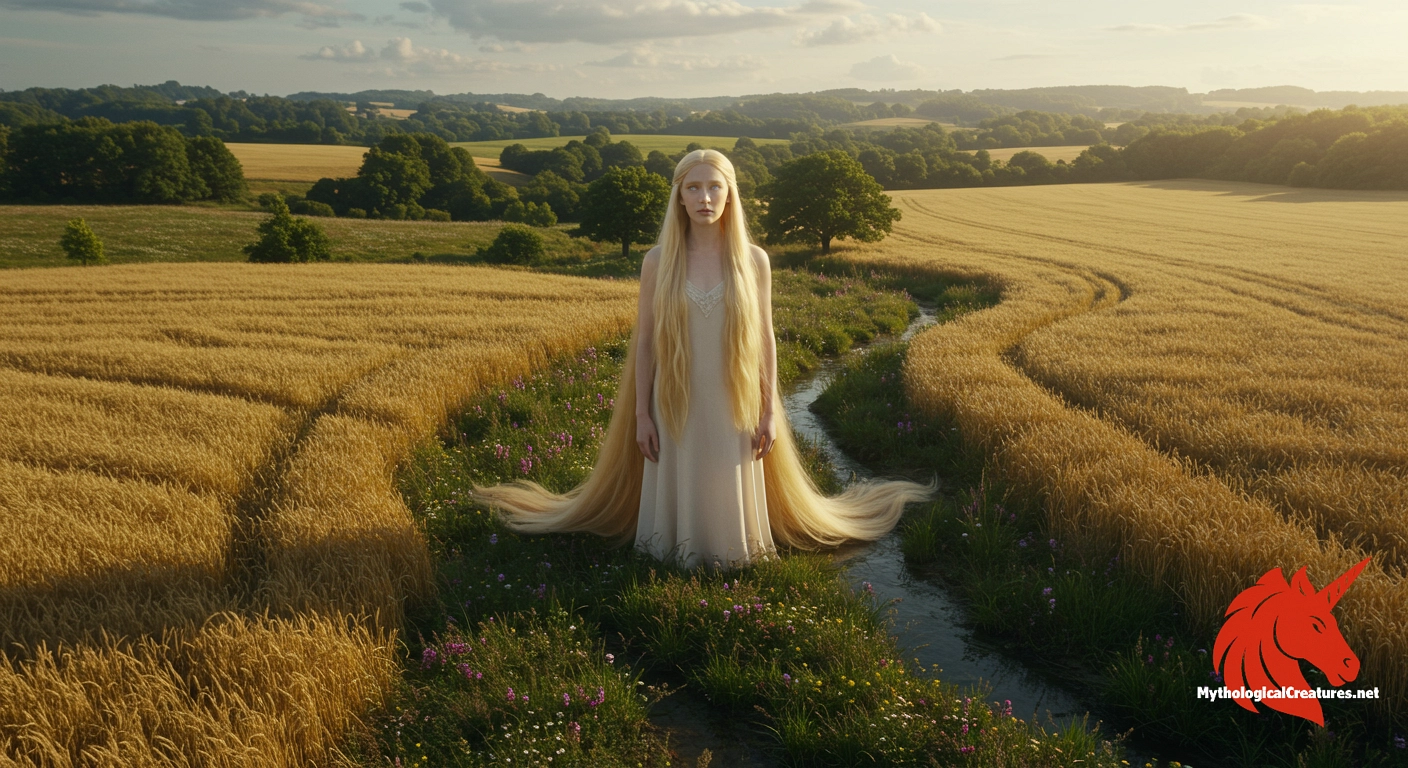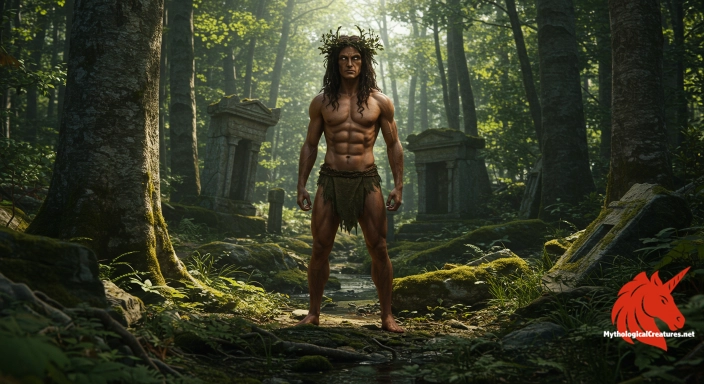Sif: Sif is a Norse goddess renowned for her radiant golden hair and her association with the earth.

Sif
Sif - Sif’s myth, particularly her golden hair, plays a crucial role in symbolising fertility and the connection between the divine and the natural world.
Origins & First Encounters
Sif stands as a luminous figure within Norse mythology, celebrated for her resplendent golden tresses and a deep-rooted connection to the earth’s vitality. Her emergence in the mythic tradition ties her to ancient agrarian symbols, suggesting that her locks may evoke fields of ripened wheat. Her origins, though shrouded in the passage of time, point to a deity whose presence has been felt long before the medieval manuscripts were penned. She is often portrayed as a symbol of fertility and renewal, embodying the cycles of nature and the sustenance of life. In many narratives, her union with the thunder god Thor highlights a harmonious blend of power and natural beauty. Early attestations of her character appear in the Poetic Edda and Prose Edda, texts that capture both her domestic and divine aspects. The imagery surrounding Sif hints at an interplay between mythic elegance and the nurturing forces of the land. Her story, enriched over centuries, continues to radiate themes of prosperity, fertility, and the inexorable link between the divine and the natural world.
Source Texts & Tale Variants
Sif is primarily attested in the medieval compendiums of Norse lore, with the Prose Edda offering a vivid account of her famed golden hair and the mischief by Loki that led to its renewal. The Poetic Edda and assorted skaldic verses add layers to her persona and introduce variations that shed light on her ritualistic and symbolic roles. Some texts recount the dramatic episode wherein Loki’s prank prompts Thor to force a divine correction, resulting in not only Sif’s restored beauty but also an array of precious items for the gods. Variants of the story extend her myth further by mentioning her role as a mother, thereby implying her importance within the family of deities. Other narrative strands focus on her association with fertility and the land, suggesting an intrinsic link to the cycles of sowing and reaping. Manuscripts from different regions offer subtle differences in how her character is framed, occasionally attributing additional powers and responsibilities to her. The diversity in her portrayal underscores the adaptability of her myth throughout the Norse literary tradition. All these sources combine to form a complex mosaic that has intrigued scholars and enthusiasts alike, allowing room for interpretation and local embellishments.
Form & Powers
Visually, Sif is defined by her cascading hair of pure, shimmering gold that radiates a soft glow reminiscent of early morning light over a golden field. Her features are depicted as graceful and refined, with a countenance that exudes both serenity and a quiet strength. Artistic representations often imbue her with an ethereal beauty, where her eyes mirror the calm of pastoral landscapes and the wisdom of time. Her stature, while not the focus of most descriptions, is typically illustrated as elegant and proportional, enhancing her aura of nobility. The adornment of her hair is not merely ornamental but is laden with symbolic resonance, echoing themes of abundance and harvest. Some depictions include subtle hints of adornments such as woven bands or delicate ornaments that accentuate her status among the gods. Her overall presentation marries the tactile beauty of human form with the ineffable qualities of divine radiance. Even as visual interpretations vary slightly between sources, the universal emphasis on her luminous hair and dignified presence remains a constant thread in the depictions of Sif. This melding of natural beauty with symbolic flourish provides an enduring allure that has captivated the imagination of artists and storytellers across ages.
Regional Faces
Across the diverse cultural landscapes of the Norse world, Sif’s myth has experienced regional adaptations that highlight various facets of her character. In some parts of Scandinavia, she is revered not only as Thor’s consort but also as an independent symbol of fertility and the earth’s bounty. Local lore frequently associates her golden locks with the ripening of crops, thereby reinforcing her role as a goddess of harvest and sustenance. There are traditions that paint her as a nurturing, maternal figure, which reflects regional values centred on family and communal prosperity. In northern Icelandic tales, for example, she appears as an emblem of natural harmony, where the interplay between the divine and the land is celebrated through seasonal festivals. Southern Scandinavian accounts sometimes fuse her imagery with that of protective earth goddesses, underscoring an almost guardian-like quality. Over time, folk narratives have reshaped her identity to resonate with local agricultural practices and the cyclical rhythms of nature. Illustrations in regional art further accentuate her role as an earth-bound deity, blending mythic symbolism with everyday experiences. These varied regional narratives ensure that Sif’s legacy continues to mirror the unique cultural priorities of different Norse communities.
Cultural Parallels
Sif’s characteristics invite intriguing comparisons with other mythic figures who embody the forces of nature and fertility. Much like Demeter in Greek mythology or the Celtic figures associated with the earth’s abundance, Sif’s gleaming hair can be seen as a powerful symbol of reawakening and renewal. Her mythic role shares resonances with that of Freyja, another Norse deity whose domain encompasses aspects of fertility, beauty, and the intricate balance between love and power. European folklore is replete with characters where natural elements intertwine with divine influence, and Sif’s portrayal reflects this wider cultural motif. The emphasis on her flowing, golden hair often mirrors other traditions in which physical attributes bear deep symbolic meaning tied to seasonal cycles and agricultural fortunes. Cross-cultural comparisons reveal that many Mediterranean, Celtic, and Nordic stories embrace similar visual metaphors, utilising luminous tresses or radiant features to denote divinity and prosperity. This parallelism supports the notion that Sif’s imagery is part of a universal archetype symbolising nature’s fertile bounty. Interdisciplinary analyses have thus placed her within a broader framework of earth-centric spiritual figures, highlighting both commonalities and unique regional flourishes. Through her myth, observers can trace enduring themes of renewal, protection, and the interplay between human civilisation and the natural realm.
Legacy & Modern Evolution
Over the centuries, Sif’s portrayal has evolved from a mythic icon of fertility and devotion to one of enduring cultural significance. While her earliest depictions in medieval texts emphasised her beauty and the scandalous incident involving Loki, later interpretations have expanded her narrative into the realms of both artistic inspiration and feminist reinterpretation. Modern literature, visual arts, and even popular media have embraced her image, often portraying her as a symbol of natural resilience and a guardian of agrarian tradition. Contemporary creators frequently re-imagine Sif as an emblem of empowered femininity whose mythical qualities speak to both heritage and modern ideals. Her golden hair, once a literal element in the myth, has come to reflect the transformative energy of nature, emblematic of the cycle of death and rebirth in the environment. Cultural festivals and reenactments in parts of Scandinavia have revived her stories, merging ancient rites with modern celebrations. Academic and artistic communities continue to explore the layers of her symbolism, recognising her as a link between the ancient mythic past and today's quest for identity and meaning in a changing world. Although her narrative has been reshaped by time, the essence of Sif endures as a bridge between the mortal and the divine, inviting new generations to reconnect with the timeless cycles of nature and creativity.
Interesting Fact
An intriguing aspect of Sif is the dual interpretation of her golden hair, with some scholars viewing it as a literal trait while others see it as an allegory for the earth’s abundant harvest and fertility.
Quick Creature Info
Origin:
Associations:
Our Mythic Legendary Rating:

Habitat:
Supernatural Powers:
Physical Attributes:
Abilities:
Behavior:
Lore:
References
Discover Another Mythical Legend You May Not Have Heard Of?
Uncover the mysteries of ancient folklore and expand your knowledge of legendary beings from cultures around the world.
Dare to Meet the Oxylus....
Mythical Disclaimer: The images and data on this site are derived from various historical and literary sources, but we have found that many myths often have multiple versions and interpretations across references, sometimes contradictory. As a result, these creature depictions are artistic interpretations—imaginative blends of folklore, legend, and a dash of AI guesswork. Because creature descriptions vary widely, our illustrations and accompanying information represent our best effort to honor mythology while bridging creative gaps. Enjoy these interpretations—just remember, we've done our best to respect the stories and validate available data, but in the realm of mythology, details often shift, imagination leads the way, and nothing is ever set in stone!
Curated by the Mythological Creatures Team (rev. May 2025)
